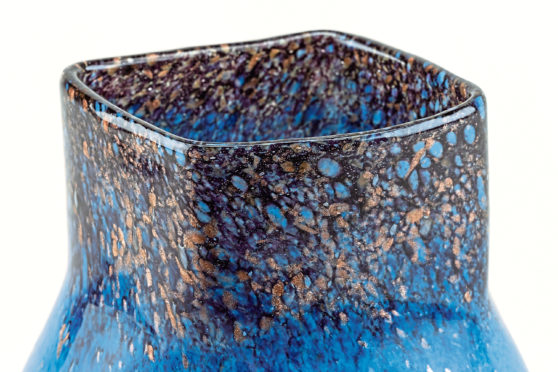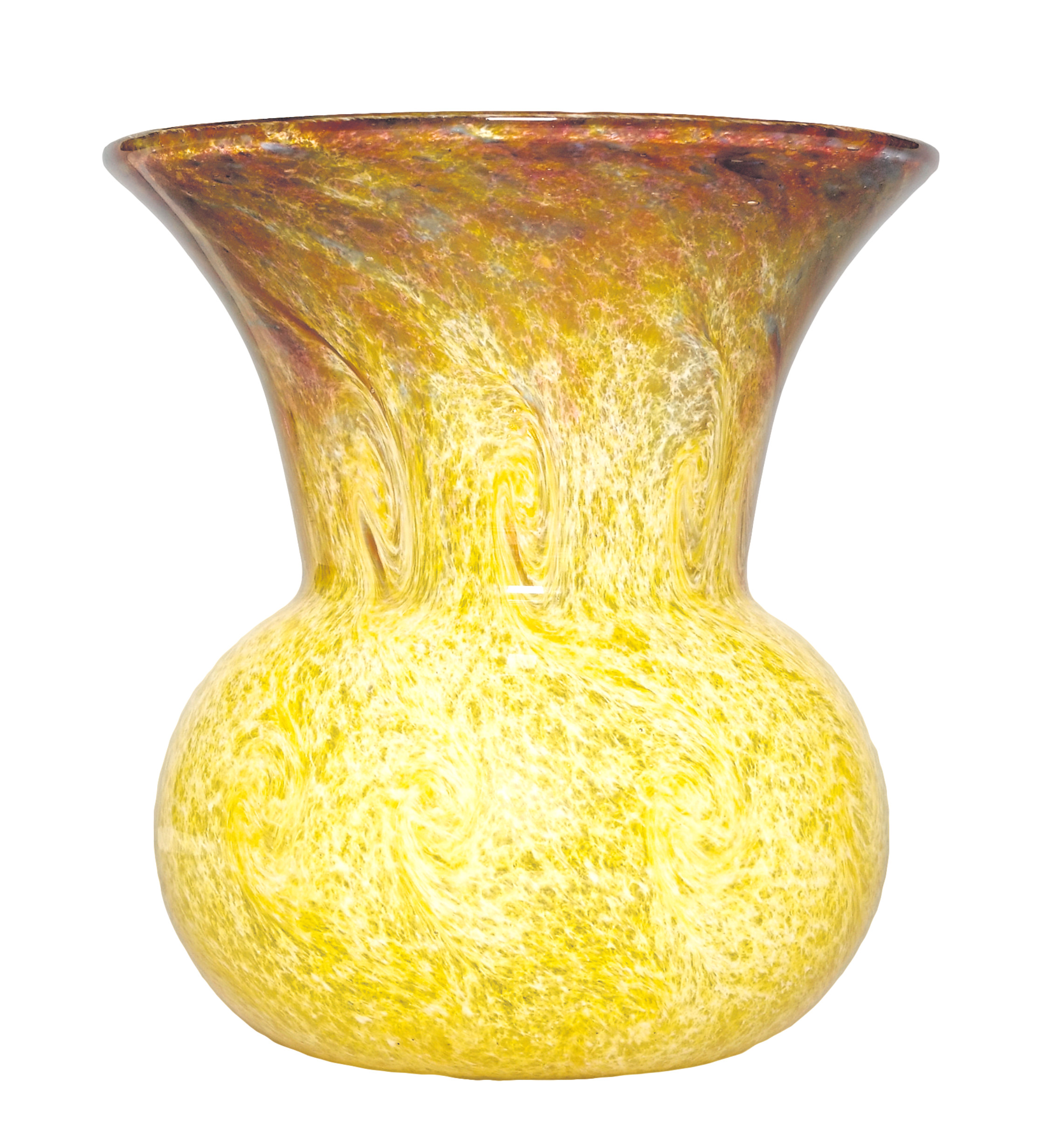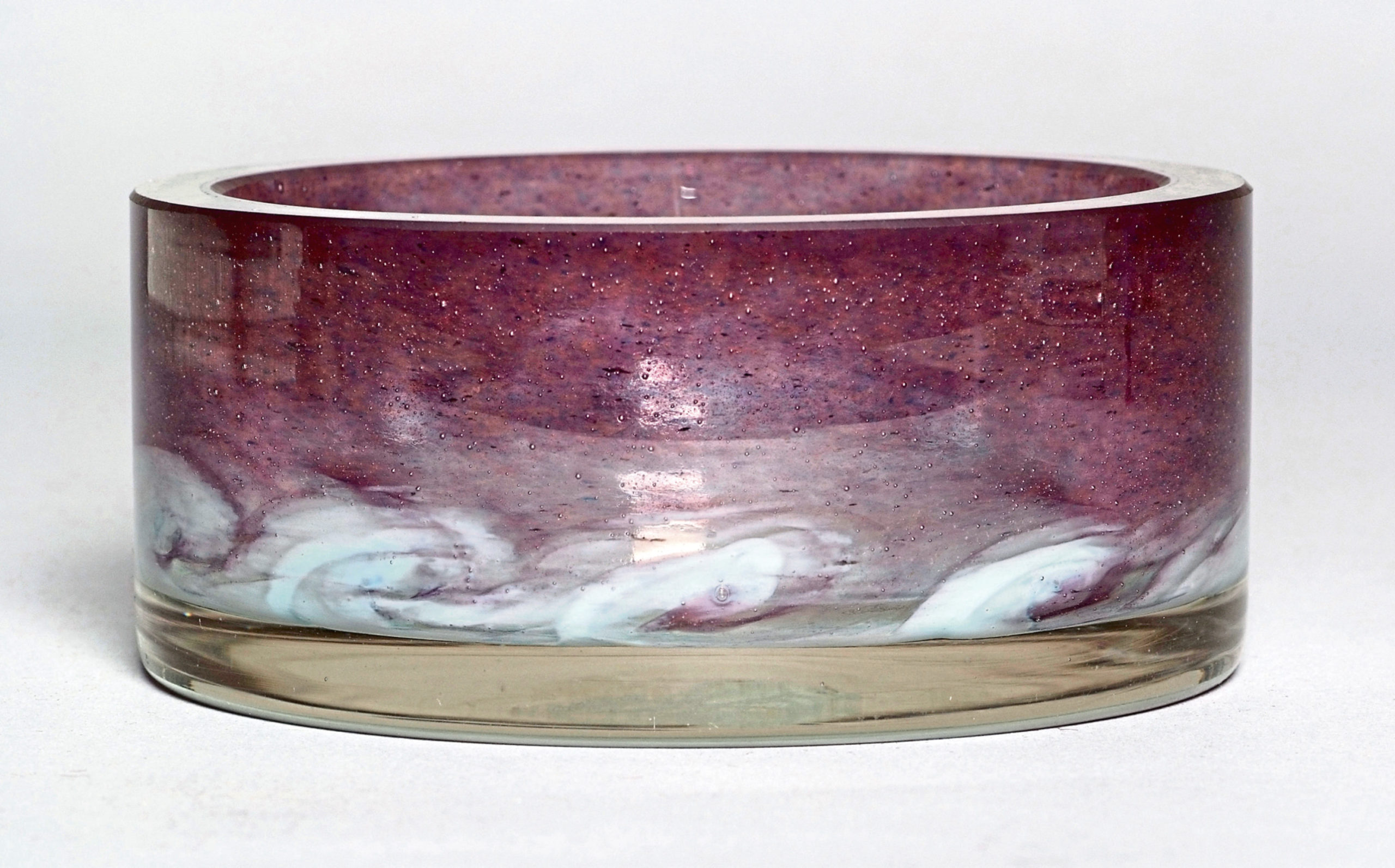We’re very lucky to have many beautiful glass pieces in our collection. Some of our glass is special for more reasons than one – it’s weeping.
Theses pieces are disintegrating – in a lengthy process that stems from their very creation: the glass was made fundamentally flawed. Glass is made up of three major components – silica, soda, and alkali.
Silica is the main ingredient, but the melting point is so high that it’s difficult to work with.
Soda is added to lower the boiling point. Although it is an essential component, it can make the glass dissolvable in water. Alkali is added to stabilise things.
If these ingredients aren’t balanced together properly, the structure of the glass will be weak and will suffer from “glass disease”. Alkali will leach out of the glass, lay on the surface and dissolve the silica, causing disintegration.
Our weeping pieces are by Monart, made at the Moncrieff glassworks in Perth between 1924 and 1961, by Salvador Ysart, a Spanish glassworker, and his four sons. They are incredibly beautiful, often handmade, using a wild and unique array of colours and swirls. And they have started to show the first signs of glass disease.
Keep up to date with the latest news with The Evening Express newsletter
Often glass disease starts with “weeping” – the glass will appear cloudy and slippery from moisture on the surface and alkali salts leaking out.
Then it will “crizzle” and tiny, thin hairline cracks will appear on the surface, eventually forming distinct cracks. The surface will flake, chip, and then, finally, completely fall apart.
The good news is that the disease isn’t infectious and can’t be spread. The bad news is… glass disease is irreversible. However, we do our best to delay the inevitable by regularly cleaning them with deionised water and keeping them at a recommended temperature and humidity.
These pieces will be part of the stunning new displays at Aberdeen Art Gallery when it re-opens on November 2. We hope you will look at them thinking of the glass half full – they may disintegrate, but, in my opinion, this makes the beauty of Monart glass more distinct. They won’t last forever, but, while their beautiful designs and colours are here, we should enjoy them.
Aberdeen Art Gallery & Museums:
- Aberdeen Art Gallery (reopening autumn 2019)
- Aberdeen Maritime Museum (open 7 days, admission free)
- The Tolbooth Museum (open 7 days, admission free)
- Aberdeen Treasure Hub Museum Centre
For visiting information go to www.aagm.co.uk
Keep up to date with all the latest news from Aberdeen Art Gallery & Museums by signing up to our e-newsletter at www.aagm.co.uk/mailinglist
Follow us on Facebook, Twitter and Instagram @AbdnArtMuseums












